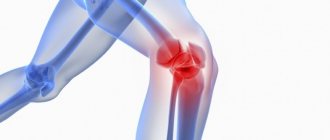Muscle pain (myalgia) is a nagging, sometimes excruciating or cramping pain in the muscles : the term myalgia consists of the Greek words Myos muscle and Algos pain. Muscle pain can be localized in a specific area of the body, or radiate or be diffuse. In principle, pain can occur in any of the more than 600 muscles in the body.
Muscle pain (myalgia) occurs most often in the area of the shoulders and neck in the back. About 75 percent of adults in Europe suffer from back pain of some kind of muscular origin. Muscles are divided into skeletal and smooth. Skeletal muscles include muscles that provide human movement and connect bone structures. Quite often, pain is caused not by skeletal muscle, but by smooth muscle (for example, problems in the smooth muscle of the heart can be the source of chest pain). Smooth muscles are located in the walls of hollow organs of the body such as the stomach, bladder and blood vessels and play a large role in normal organ function. The cardiac muscle, which forms the heart, is responsible for pumping blood throughout the body.
Muscles respond to commands from the brain and nervous system or other stimuli, for example, reflexively when a neurological examination is performed using a hammer. Muscles contract when stimulated and relax after contraction. Muscles can become a source of pain due to a variety of diseases and conditions, including infections, injuries, autoimmune diseases, neurological and muscular diseases, malignancies (cancer), and even after taking certain medications. Muscle pain can also involve ligaments, tendons and fascia, which are soft tissues that connect muscles, bones and organs.
A person may feel muscle pain in specific muscles of the body, such as the back muscles or leg muscles, or the pain may be diffuse throughout all muscles, such as with the flu. During an attack of angina, a patient experiences chest pain due to problems in the myocardium. Menstrual pain is pain caused by the smooth muscle of the uterus. Temporary skeletal muscle pain often occurs due to muscle tension due to awkward movement or excessive strain. This type of pain often affects one or more muscles and is usually sharp and intense. Abstinence from the activity that caused the pain, rest, topical cold, and anti-inflammatory medications usually help reduce pain associated with overuse of the muscles. Muscle pain can be caused by serious medical conditions such as fibromyalgia, infections, or dermatomyositis.
Muscle pain can be a symptom of a serious medical condition, such as a muscle tear or infection. Therefore, it is necessary to immediately seek medical help if muscle pain is persistent or worsens.
Not only muscle pain , but any pain is an important signal for the body. Various stimuli can cause pain, such as heat or cold, pressure or shock, as well as electrical stimulation and chemicals. The so-called pain receptors are responsible for transmitting these stimulating sensations. Pain receptors are free nerve endings that are located both on the surface in the skin and deep in the muscles, tendons and ligaments, as well as in various organs. When pain receptors are stimulated, the signal from them goes to the central nervous system, where the signal is analyzed and a protective response occurs, which is aimed at preventing further damage.
Causes
Most often, chills are observed against the background of fever3, which accompanies almost all infectious diseases4 - this is a universal reaction of the body4. When germs and viruses penetrate it, the body “defends itself” by increasing body temperature2,3.
Since muscle contractions produce more heat6, the more severe the chill, the higher the body temperature2. Slight chilling is typical for 38 – 390C, “teeth chattering” and severe trembling are typical for fever in the range of 390 – 400C. Stunning chills that cover the entire body occur at temperatures above 400C3.6.
Chilling and fever can be a concern with various infectious diseases, for example, with a cold, flu3 or when a focus of purulent inflammation forms in any organ, for example, in the heart, kidneys, pleura, lungs or veins7. The cause of symptoms is pyrogens, or substances that can affect the thermoregulatory center in the brain. Pyrogens can be biologically active substances released by bacteria, viruses and other pathogens3.
Sometimes pyrogens are not infectious agents, but substances that are formed in the body itself during tissue damage and breakdown - inflammation, bruises, hemorrhages2,3.
Even if you feel cold, trembling in your body, and the thermometer shows a temperature above 370C, the cause may not be inflammation or even infection, but the following conditions:
- Nervous overstrain. With neurocirculatory dystonia (neurosis), chills often begin in the evening or at night. It can be triggered by emotional stress16.
- Hormonal imbalance. Chilling in women against a background of elevated temperature (37-380C) is a common sign of menopause3,7 or premenstrual syndrome18.
- Blood diseases. Symptoms resembling an infectious fever with shaking may be a sign of hemolytic anemia or lymphoma14.
- Hyperthermia. Overheating of the body occurs after intense physical overexertion if the ambient temperature is above 26.70C14. Under such conditions, heat transfer is disrupted, and excess heat accumulates in the body5. Athletes who participate in competitions in a country with an unusual climate and who do not follow the correct drinking regime, as well as people who are obese, are susceptible to overheating14.
Diagnosis of the root cause of pain
Depending on the diagnostic results, further pain treatment tactics will be developed.
To determine their cause, the following instrumental and laboratory studies are used:
- General blood and urine analysis;
- Blood biochemistry (the presence of infectious antigens, acute phase proteins, tumor markers is determined and liver tests and rheumatic tests are performed);
- Bacteriological cultures (if there is an infection in the body, allows you to determine its causative agent);
- CT and MRI (to identify pathological processes in the musculoskeletal system);
- Neuromyography (examines the conduction of nerve impulses in muscles);
- Bone marrow puncture (done if necessary).
The diagnostic complex can be supplemented with other studies.
Movement test to determine the source of pain
A movement test is performed by almost every doctor when examining a patient who comes in with pain in the joints and muscles. The principle of such a test is simple: if during a certain movement the pain is concentrated in a specific area, then the structures in this area are affected. An example of a motor test to determine impairments in the upper limbs.
| Pain occurs during: | What may be damaged: |
| Retracting movement of the hand back or to the side | Compression of the shoulder joint and pinching of the rotator cuff and biceps tendons between the head of the humerus and the acromion. |
| Raising your hand up | The acromioclavicular joint is affected |
| Semi-circular movement clockwise | Inflamed or damaged tendon apparatus of the infraspinatus/teres minor muscle |
| Semi-circular motion counterclockwise | Inflamed or injured subscapularis tendon |
| Flexion and supination in the elbow area | Damage to the biceps brachii tendon |
| Generalized motor dysfunction | Inflammation of the shoulder joint capsule or the joint as a whole |
| Myalgia and arthralgia in the shoulder region at rest | Plexitis, compression, compression of elements of the neurovascular bundle of the lateral triangle of the neck by an accessory cervical rib, scalene muscle syndrome, Falconer-Weddell syndrome. |
Why do chills appear without fever?
Chilling can also occur against the background of normal or even low body temperature1,2,14. During hypothermia—for example, prolonged exposure to cold or immersion in cold water1,2—the blood vessels constrict to prevent the body from losing heat. For example, trained swimmers with a sufficient amount of subcutaneous fat that retains heat, as a rule, do not feel shivering in cold water. But thin people with low levels of physical activity in similar conditions quickly lose blood circulation, develop severe tremors that turn into chills, and their body temperature may even drop14.
Other causes of chills without fever include:
- hypoglycemia - decreased blood glucose levels - in patients with diabetes mellitus9;
- hypothyroidism - deficiency of thyroid hormones15;
- hypertensive crisis - a sharp and significant increase in blood pressure8.
Shivering without fever may occur if a long time passes between doses of fever-reducing medications. These medications quickly bring down the temperature, but when used incorrectly, sometimes a side effect occurs - muscle contraction, that is, trembling in the body. To prevent such phenomena from occurring, consult a specialist; he will tell you how to take antipyretic drugs correctly14.
Prevention
Muscles, like many organs of the body, have the ability to regenerate. The body is able to recover on its own. Naturally, if a person does not interfere with him with wrong actions, he will only aggravate the situation. A healthy lifestyle is the key to not only longevity, but also great well-being.
Several rules, strictly observed throughout life, allow you to maintain excellent health until the end of your days. This is also true for muscles, which can remain in excellent tone, despite any age-related changes.
- proper diet;
- active lifestyle;
- regular exposure to fresh air;
- optimal physical activity;
- proper organization of working time and place;
- cessation of smoking and alcohol abuse.
The rules are simple and accessible to every person, regardless of gender, specific professional activity, or age. Strict implementation will allow you to forget about pain in the muscles, prevent their occurrence in advance, and fully enjoy a healthy, fulfilling life. Naturally, even if you feel excellent, you should not forget about the need for regular medical examinations.
What to do if you have chills
In case of hypothermia, it is enough to warm up - put on warm clothes, drink hot tea or milk1. If, with the flu or a cold, against the background of fever (above 380C) and chills, your health worsens, your legs and arms become cold, and your skin becomes “marbled,” there is a possibility that your body temperature will rise, which means you need to take action2,10. First of all, consult a doctor at the clinic or call a doctor at home.
To relieve unpleasant symptoms, when chills occur:
- Wrap yourself in a blanket and keep warm. There is no need to be afraid that the temperature will begin to rise even faster. During fever, the body does not lose its ability to resist external heat2.
- Wipe the body with warm water at a temperature of 410C and above. As water evaporates from the surface of the skin, it will remove heat and contribute to its gradual cooling. But remember that you should not wipe your skin with cold water: sudden cooling causes even greater muscle and vascular spasm, intensifies chills and accelerates the rise in temperature10. 30 minutes before rubbing, you should take an antipyretic drug10.
If you rub down without taking an antipyretic, chills may appear - due to trembling in the body, the temperature will rise again17.
To combat fever and other symptoms of colds (ARVI) and flu, paracetamol-based drugs are intended, for example, the combined products RINZA® and RINZASIP®, which can be used by adults and adolescents from 15 years of age, and RINZASIP ® for children from 6 years of age11,12.
- The composition of RINZA® tablets includes paracetamol, phenylephrine, chlorphenamine and caffeine. The drug is ready for action 10 minutes after administration13, reduces muscle and joint pain, reduces high fever11. RINZA® also makes breathing easier when the airways are swollen, helps reduce a sore throat, itchy eyes and nose11.
- Powders for preparing the RINZASIP® drink with vitamin C, in addition to paracetamol, phenylephrine, pheniramine and caffeine, contain ascorbic acid. RINZASIP® with vitamin C in orange, lemon or blackcurrant flavors reduces cold symptoms and helps increase the body's resistance12.
Attention! You can take antipyretic drugs for no more than 5 days11,12. If fever, shivering and cold sensations go away or recur, you should consult a specialist and find out the causes of this condition4.
Osteoporosis
Another degenerative disease that occurs as a result of disruption of metabolic and metabolic processes in the body, often associated with age-related changes in the biochemical processes of the body. The development of osteoporosis is directly related to the exchange of microelement ions – calcium and vitamin D from the group of fat-soluble vitamins. Osteoporosis develops when there is an insufficient concentration of calcium ions in osteoclasts of bone tissue, which leads to a decrease in bone elasticity and increased fragility. Despite the fact that in most cases osteoporosis develops in old age, the disease can occur at any age due to pathology of the endocrine system. Thus, osteoporosis can develop as a result of a disruption in the functioning of the hormones of the parathyroid glands, which produce parathyroid hormone, a hormone that has a direct effect on calcium metabolism in the body. The clinical picture of osteoporosis is dominated by the symptom of pain in the bones and muscles of the whole body, since due to an imbalance in the ionic balance in the body, patients often experience a convulsive syndrome.
Is it possible to prevent chills?
To avoid the appearance of this symptom, you must first act on its causes - avoid situations in which it occurs, for example, hypothermia or training in conditions of high air temperature14. It is also important to strengthen the immune system and begin treating a cold at its first symptoms. If chilling is not associated with a cold and occurs periodically8,14,16, you need to consult a doctor in a timely manner to prevent a new attack. Indeed, in such cases, chills can be a signal that the body gives in case of various chronic diseases2.
The information in this article is for reference only and does not replace professional advice from a doctor. To make a diagnosis and prescribe treatment, consult a qualified specialist.
Arthrosis
Arthrosis is another widespread disease of the musculoskeletal system among the population, one of the most common symptoms of which is pain in the bones and joints. Arthrosis is a disease of a dystrophic nature, which can be characterized by slow damage to connective and bone tissue in the body of a person with arthrosis. Degenerative changes in the architecture of bone tissue lead to slow deformation of the end sections of the long tubular bones of the extremities, which in medical practice is called deforming arthrosis. After 30 years, the risk of arthrosis doubles every 10 years, so arthrosis is very common in people over 60 years of age. The main reason for the development of arthrosis and the associated pain syndrome in the bones is a decrease in the trophism of the tissues of the musculoskeletal system due to deterioration of blood flow in this area. Due to the destruction of articular cartilage, patients often complain of sharp or aching pain in the bones of the legs.
Bibliography:
- Avkhimenko M. M. Cold injury: emergency medical care, prevention // Nurse / No. 1. – 2014. – P. 33-39.
- Vismont F.I. Selected lectures on pathophysiology. Fever. // Minsk. – 1997. – 21 pages.
- Goncharova O. M., Lobanova E. V. Feverish syndrome in the practice of a local therapist // Textbook / Amur State Medical Academy - 2018.
- Zvereva N.N., Sayfullin M.A. Fever: causes, errors, optimal approach // Medical Council / No. 11. – 2021. – P. 158-161.
- Kalyuzhnaya L. I., Zemlyanoy D. A. Heat transfer disturbances. Fever // Pediatrician / volume VI. - No. 1. - 2015. - P. 125-133.
- Litvitsky P.F. Disturbances in the body's thermal balance. Fever // Surveys of modern pediatrics / VOLUME 8 – No. 6. – 2009 – P. 55-63.
- Tsogoeva L. M., Snopkov Yu. P., Lavrov E. V. Fever of unknown origin (to help the practitioner) // Emergency Medicine // No. 5 (60). – 2014. – P. 40-45.
- Podolskaya A. A., Kim Z. F., Palmova L. Yu. Hypertensive crisis: a differentiated approach to therapy // Bulletin of modern clinical medicine // 2015 Volume 8, Appendix 1, pp. 142-146
- Starostina E. G. Hypoglycemia and hypoglycemic coma // Medical Council / No. 5-6. – 2013. – P. 6-10.
- Zakharova I.N., Korovina N.A., Ovsyannikova E.M. Fever, variety of causes and complexity of solutions // Medical advice / No. 2. – 2013. – P. 82-90.
- Instructions for use of RINZA® tablets:
- Instructions for use of RINZASIP® with vitamin C: , .
- Paracetamol in the composition reaches its maximum concentration in the blood plasma after at least 10 minutes. Not associated with effect on symptoms. Pharmacology and Pharmacokinetics, edited by Mark Tomlin, page 62, 2010.
- Nikonov V.V., Feskov A.E., Fedak B.S. Feverish conditions in clinical practice // Emergency Medicine. Selected clinical lectures. Volume 4 - 2nd ed., rev. and additional / Donetsk: Publisher Zaslavsky A.Yu., 2012. - 512 p. / ISBN 978-617-632-001-2
- Okorokov L.N. Diagnosis of diseases of internal organs: T. 2. Diagnosis of rheumatic and systemic diseases of connective tissue. Diagnosis of endocrine diseases: - M. Med. lit., 2005-576 p.
- Okorokov A.N. Diagnosis of diseases of internal organs: T. 7. Diagnosis of diseases of the heart and blood vessels: - M. Med. lit., 2003 - 416 p.
- Delyagin V.M. Fever. The variety of reasons and the complexity of the solution / To help the pediatrician. No. 1 2013, pp. 80-83.
- Premenstrual syndrome: tactics for managing patients in outpatient clinics. V.N. Serov, V.L. Tyutyunnik, M.A. Tverdikova // Reproductive endocrinology No. 4 (12) / 2013 P.30-34.
Provoking diseases
Myalgia can be triggered by a variety of diseases (including viral and infectious). It may also be a consequence of a particular injury. There are not isolated cases when muscle pain begins to worry a person after taking certain medications.
The difficulty is that myalgia in certain cases is not limited to the area of a specific muscle. Pain may well have a negative impact on fascia, tendons, ligaments, and soft tissues, which are the “connecting links” between muscles, internal organs, and bones.
People do not always objectively perceive pain in the muscles, hoping that they will go away over time. Patients pay much less attention to myalgia compared to headaches or discomfort in the heart area. In fact, muscle pain can often indicate symptoms of dangerous diseases. If you do not seek medical help in a timely manner, serious consequences cannot be ruled out.
It is much safer to consult a doctor as soon as the first signs of muscle pain appear.








